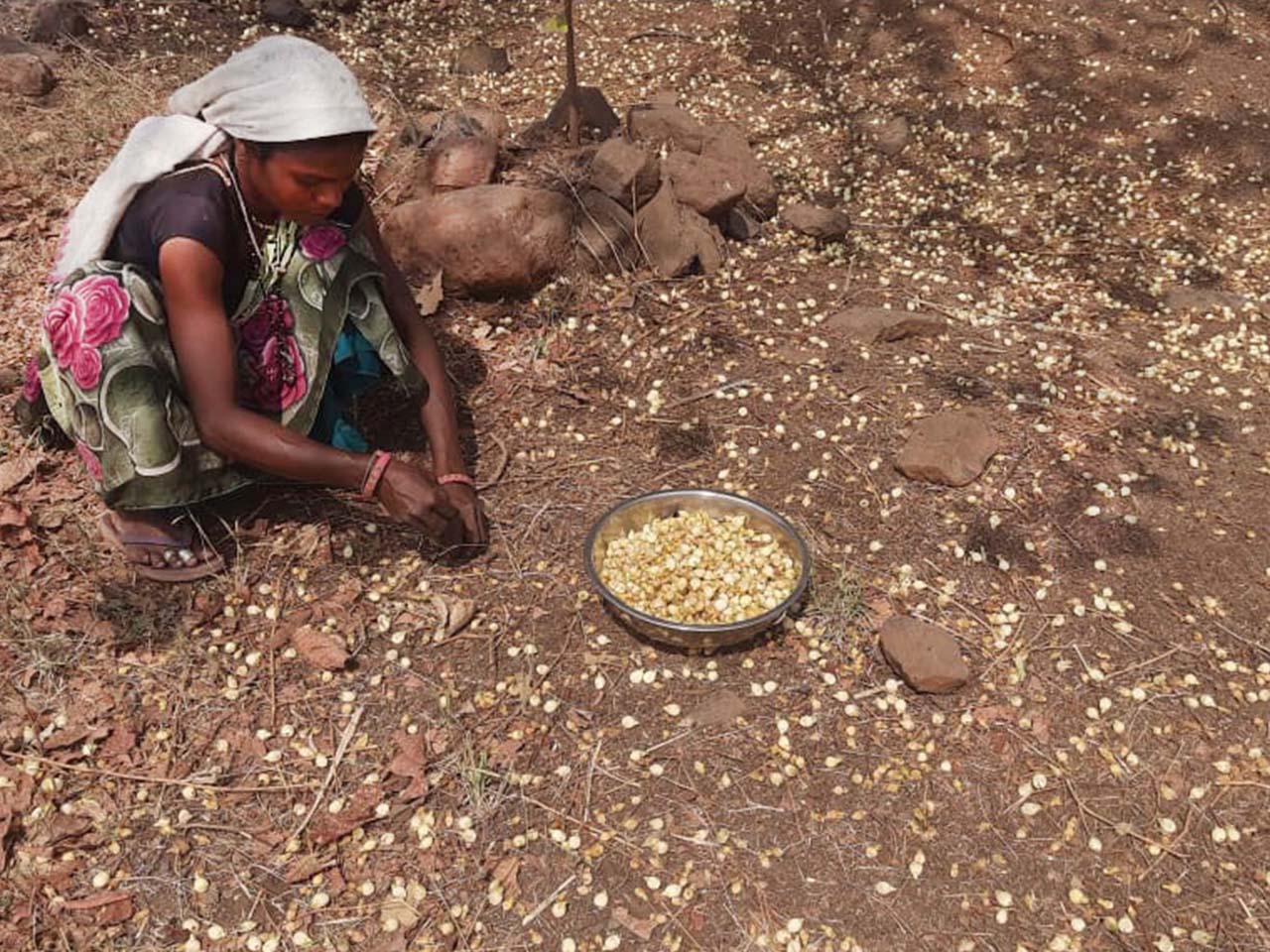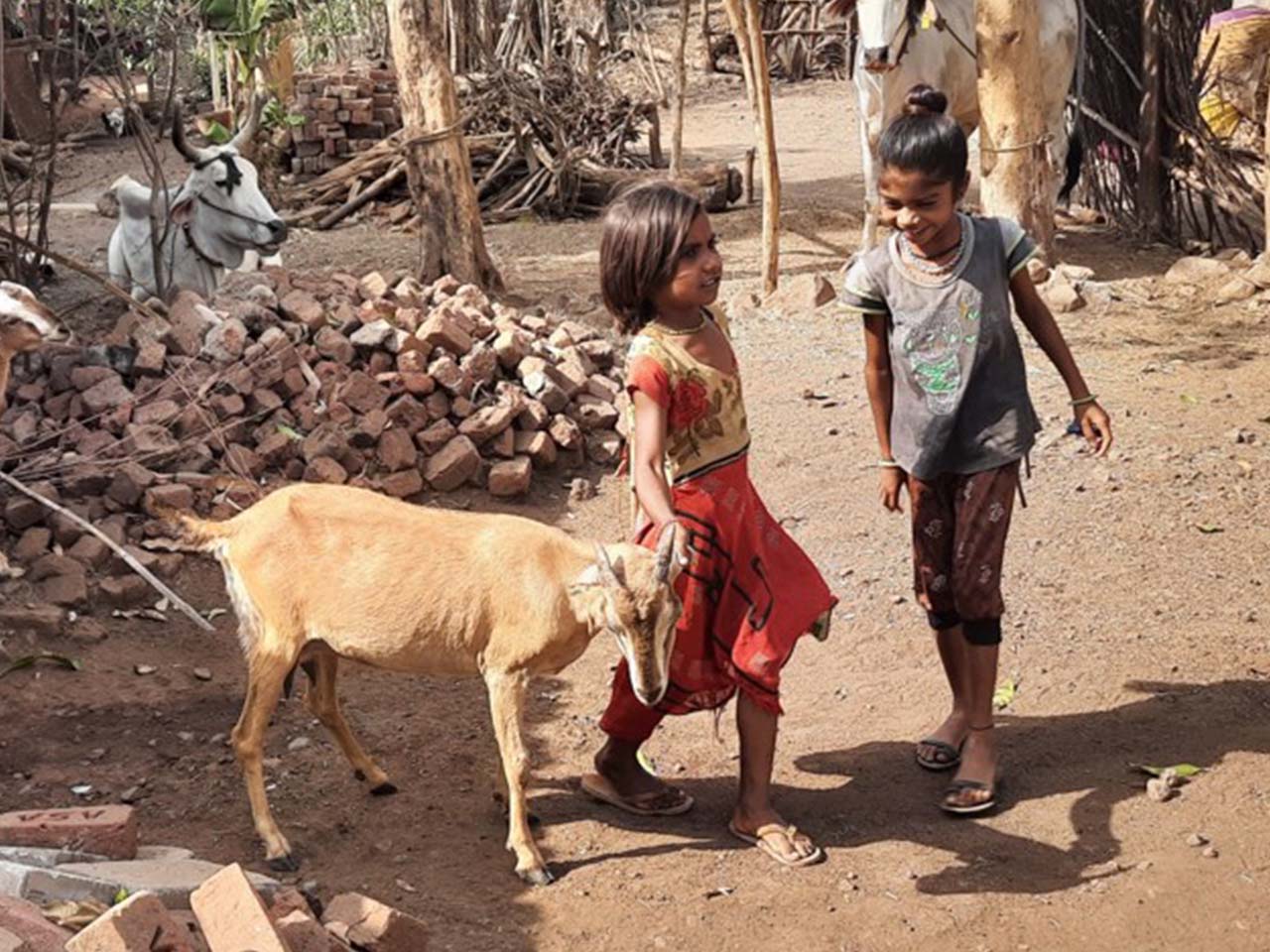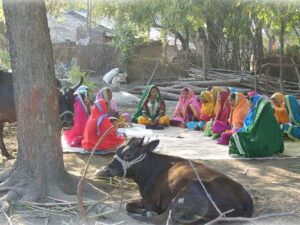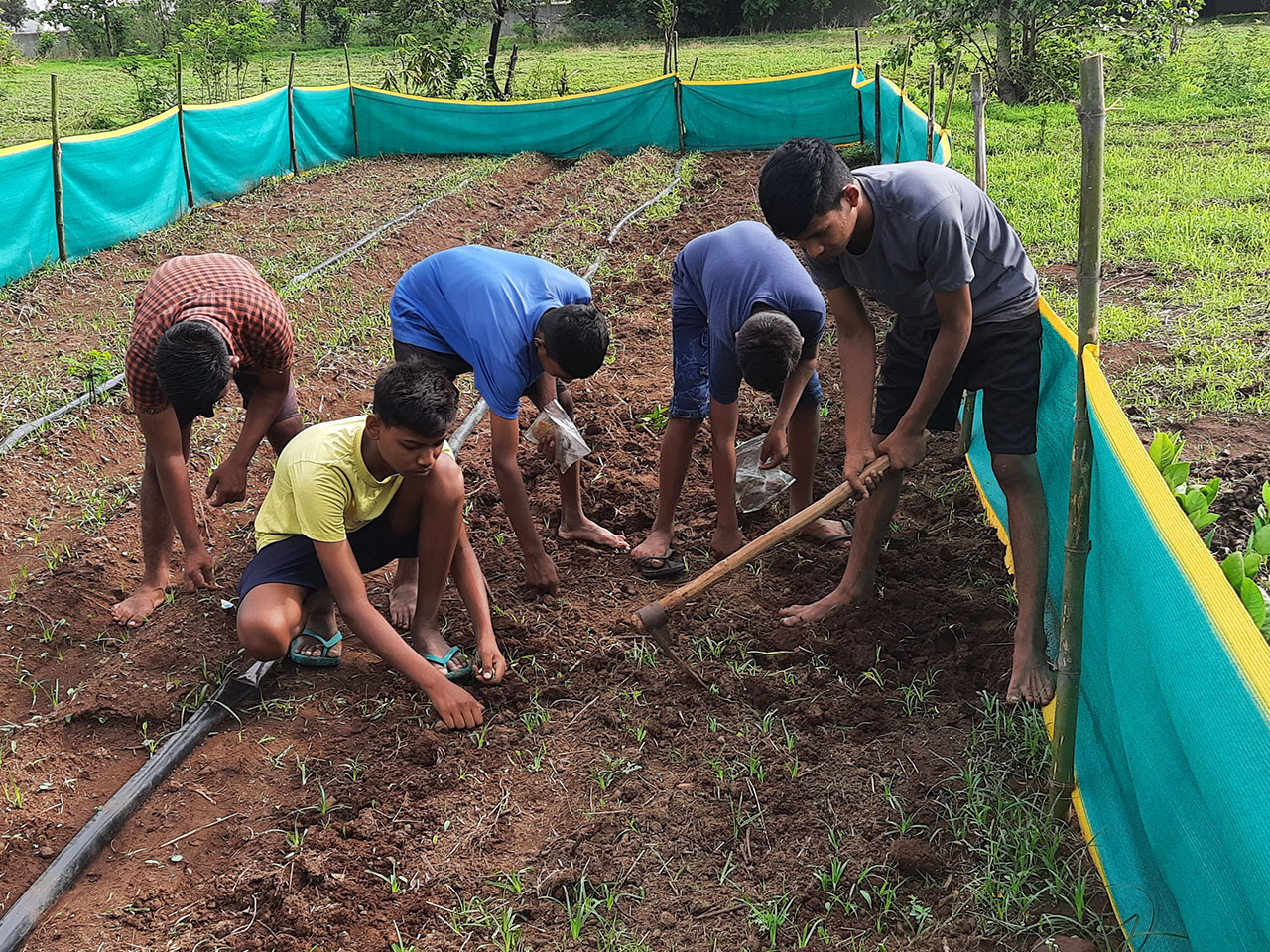
The JSM office is located in the town of Nandurbar, headquarters of the Nandurbar district of Maharashtra. The Adivasi communities we work with live in villages spread across the district, some in remote, hilly areas as far away as 60 km from the town. Our work extends to the Talukas of Nandurbar, Taloda, and Akkalkuva.
Bhils are the major Adivasi community in these areas. The Bhil Adivasis of Nandurbar are a large group with links to other tribal groups in the neighbouring district of Dhule and in the adjacent states of Gujarat and Madhya Pradesh.
They are a strong, self-determining people. Poor but proud of their Bhili language, culture, occupations, their identity. They are politically active, though divided by the usual lot of political divisions.
They are farmers and labourers – farmers during the monsoon and, if irrigation is possible, beyond the monsoon; but enterprising labourers who travel far to work as wage labour in brick kilns, factories, commercial farms, and construction sites, enduring harsh working conditions.
Their farming has seen an increase in cash crops like cotton, sugarcane, papaya plantations. Surplus milk is usually routed to Gujarat’s Sumul dairy.
Young Bhils, like other youth elsewhere, look forward to new experiences in music, dress, employment (as contrasted with agriculture). Many young women undergo training for different nursing skills and are the main nursing staff of the hospitals in Nandurbar.
Successive governments have reached out with primary schools into most remote areas of Nandurbar district. But the challenge remains of how to get teachers to reach such schools, given rough roads and inadequate transport.
As education advances they take up government jobs in different departments. A recent Collector was a Bhil, as was the Chief Surgeon of the civil hospital.
Bhil communities are tolerant of different religious persuasions. Hindu, Muslim, Christian faiths have their followings in relative harmony. But in Nandurbar town the tensions between religious groups erupt occasionally.
Their dominant deity is Goddess Mata DevMogra, whose beautiful natural shrine is just across Maharashtra’s border with South Gujarat. Their great festival is Holi, with special dances, rituals held in different gathering places, each having its own style of celebration.
Their totems at the entrance of the village road, their little statuettes of persons who have passed away mark the area of the village. Burial areas, some with groves, are found in villages. Cremation is also practised. But forests keep disappearing with such customs.
Like the populations around they are losing interest in maintaining their natural resources as a source of livelihood, being more attracted by the commercial culture prevailing elsewhere. However, they are perforce compelled to continue subsistence farming in the absence of competitive education or substantial state investments in environment rejuvenation. The construction of massive dams has inundated vast forests in the north of Nandurbar, causing displacement of Adivasis from their ancestral homelands.
The future of Adivasi survival, like that of other poor communities more directly dependent on nature, needs sustainable agriculture, forest rejuvenation, adequate water resources. If they succeed with indigenous technology to maintain and enhance their natural resources they have a better chance to survive and flourish.
Their very tradition of indigenous medicine is an example of a cost-effective and reliable health system. During the pestilence of Covid some of them fell back on their indigenous health remedies and survived. However, this tradition depends in turn on the survival of the forests.
It’s good working with them. Receptive but not supine. They have their own way of living.



